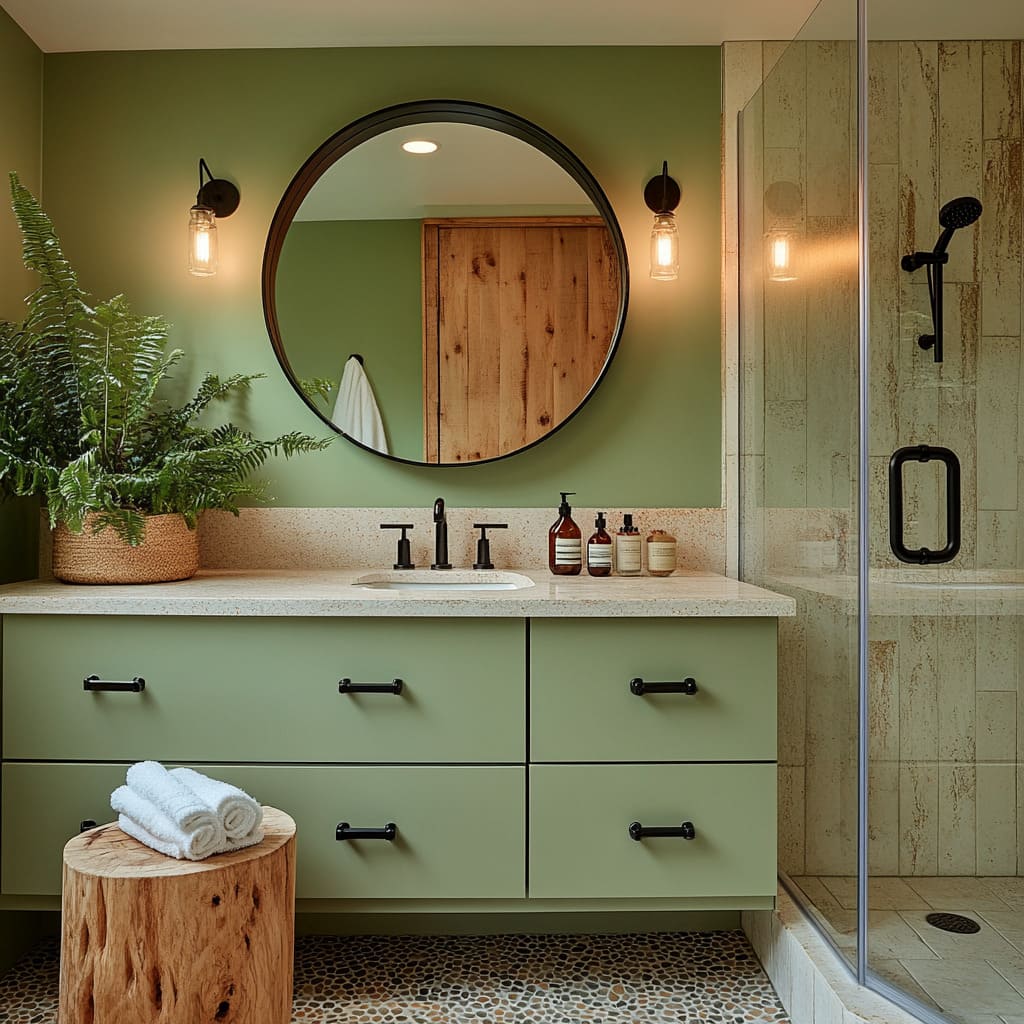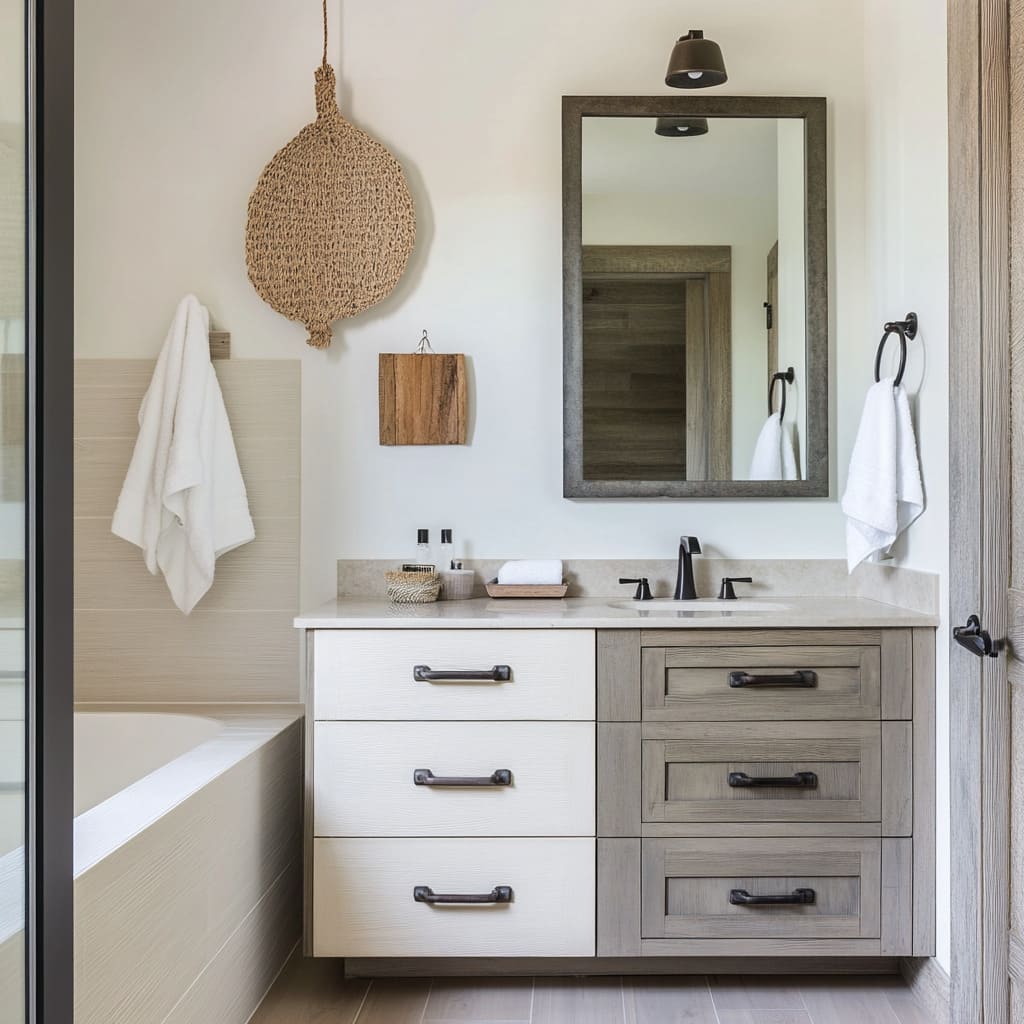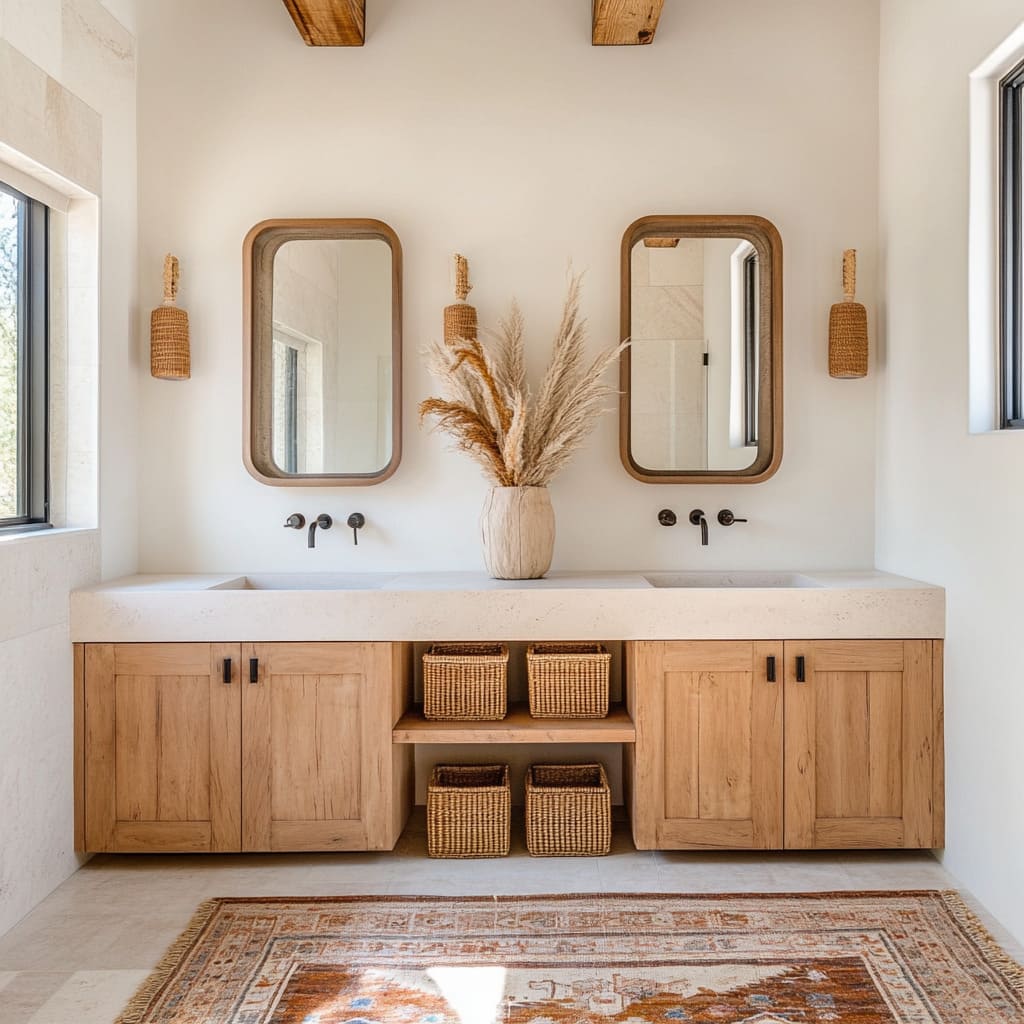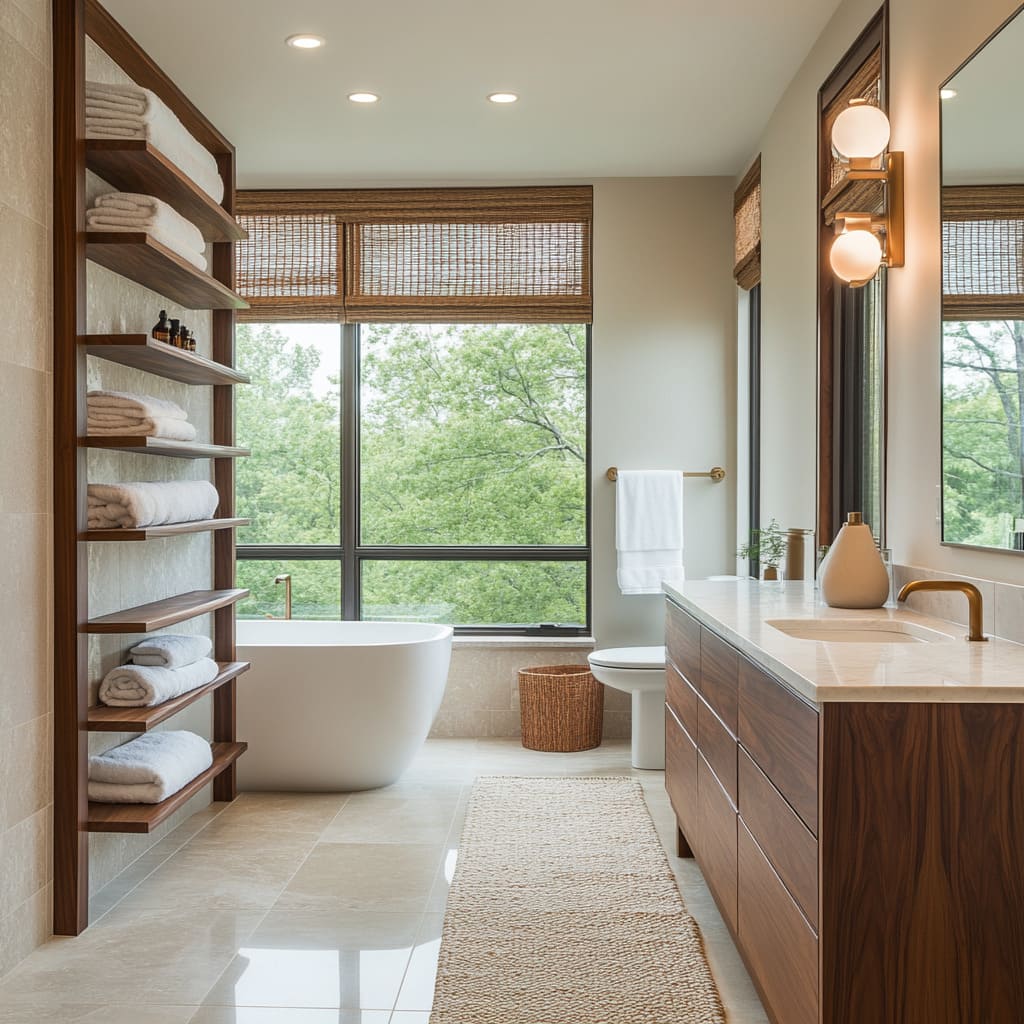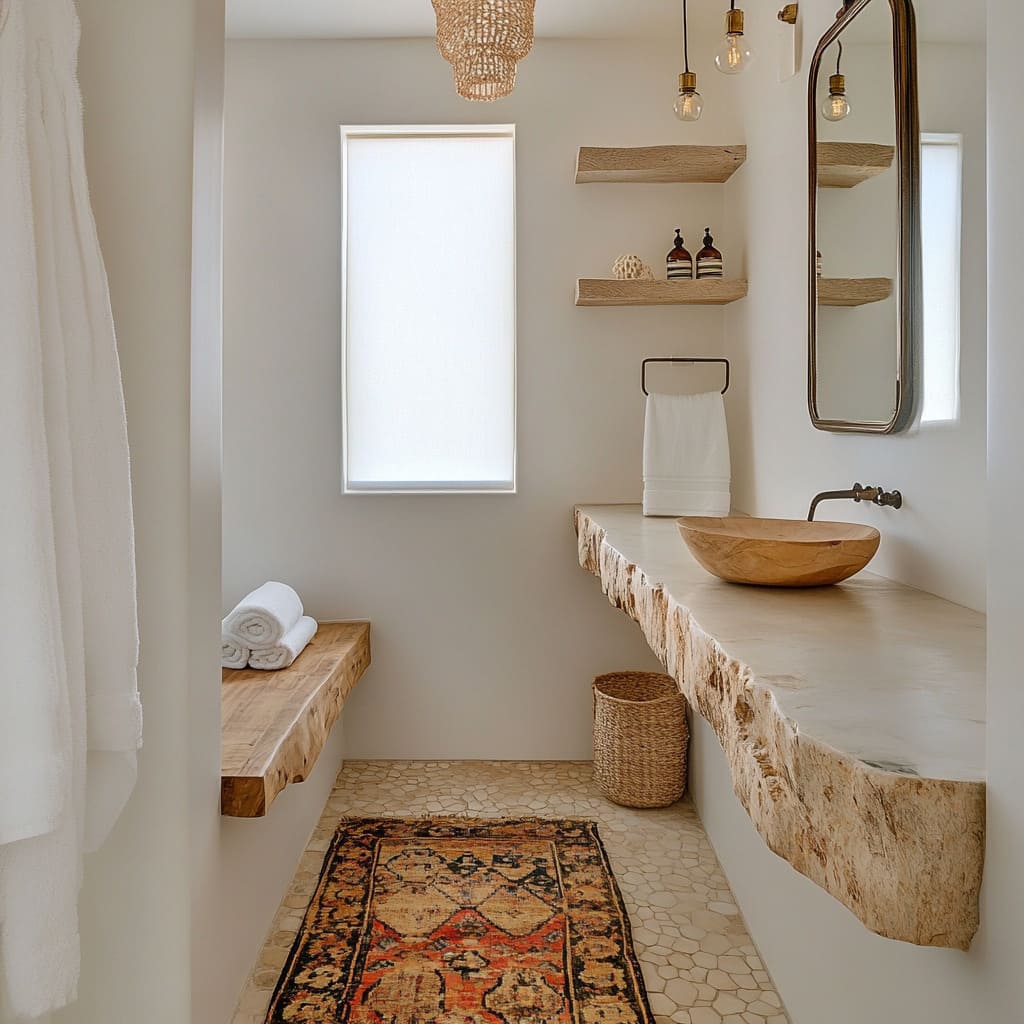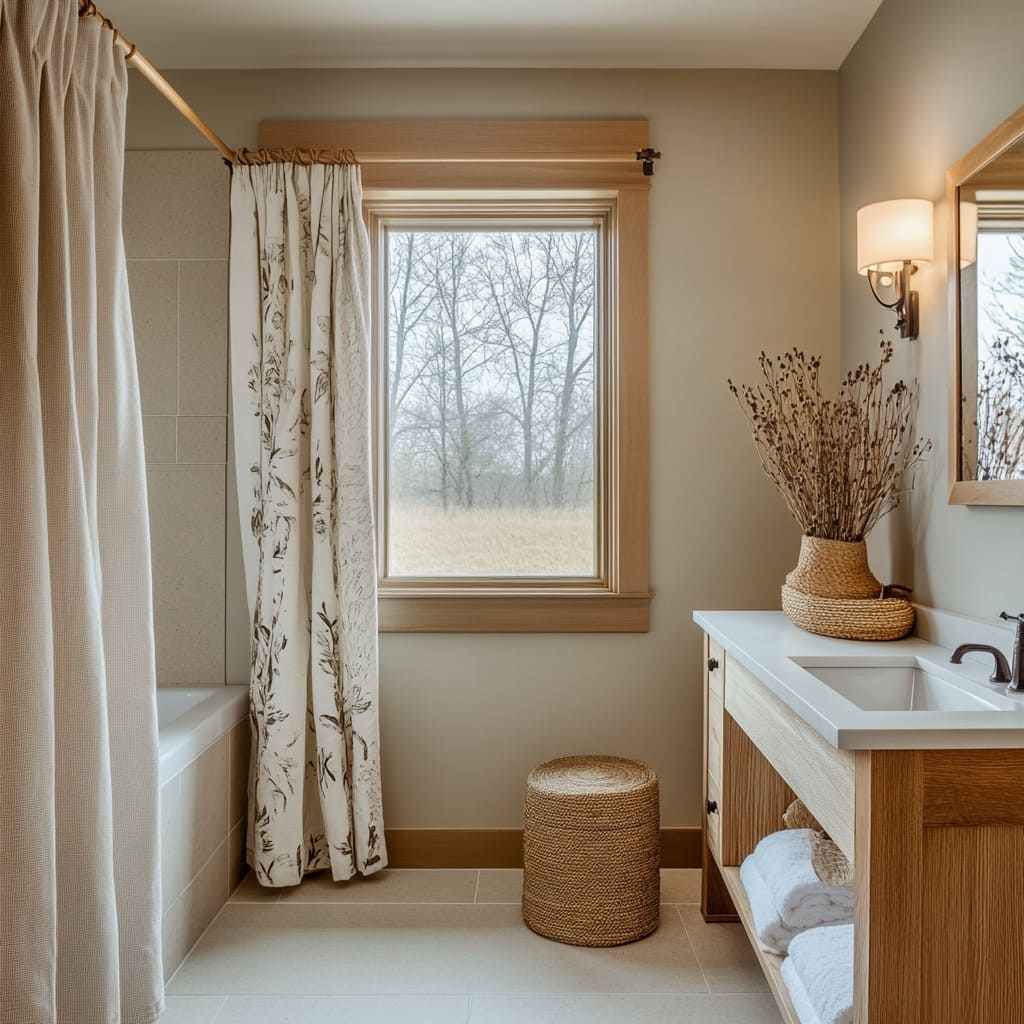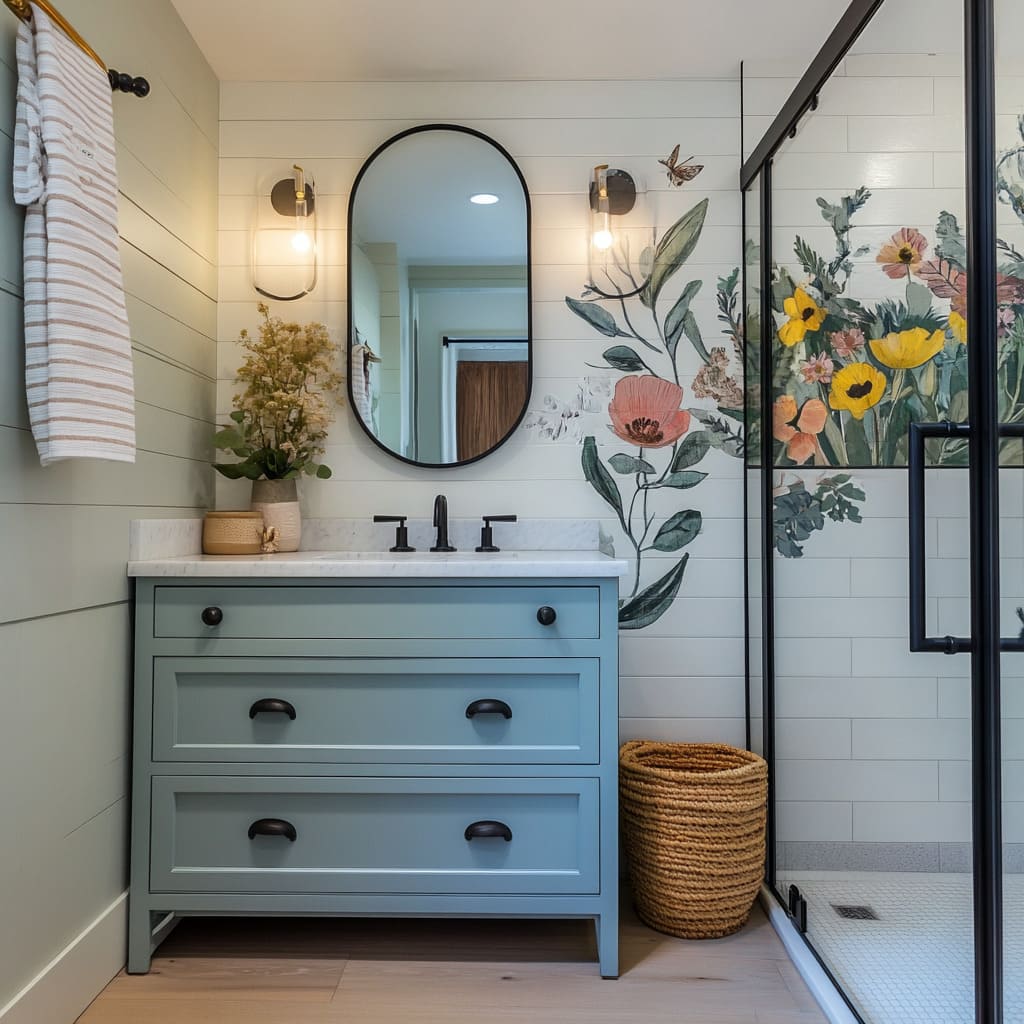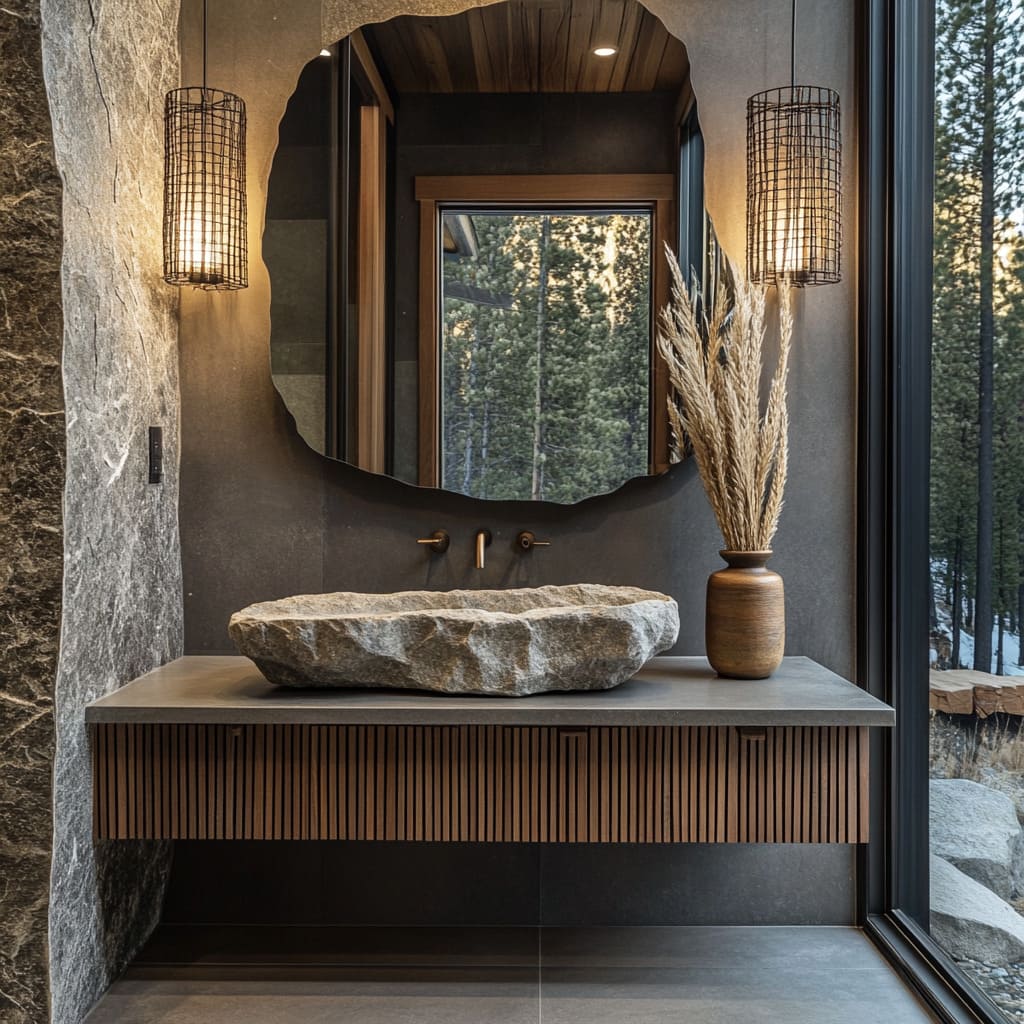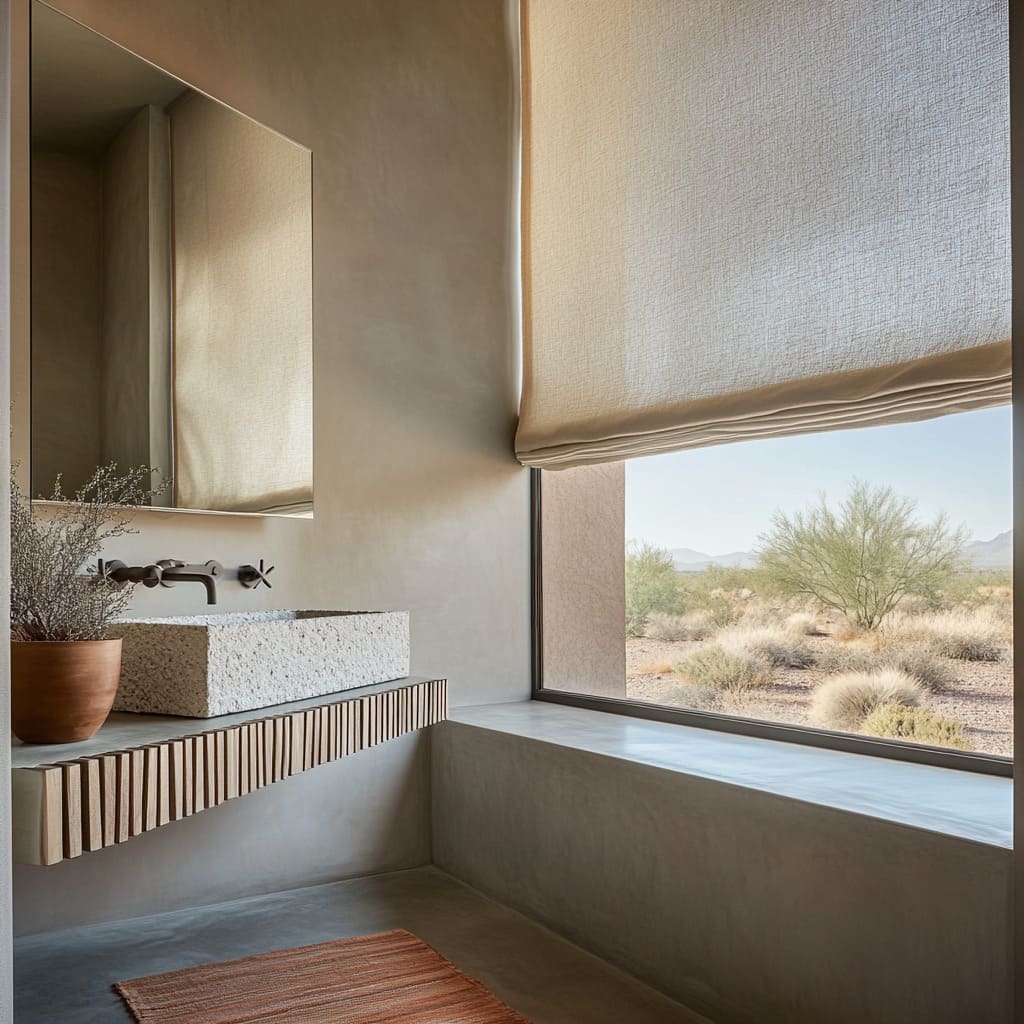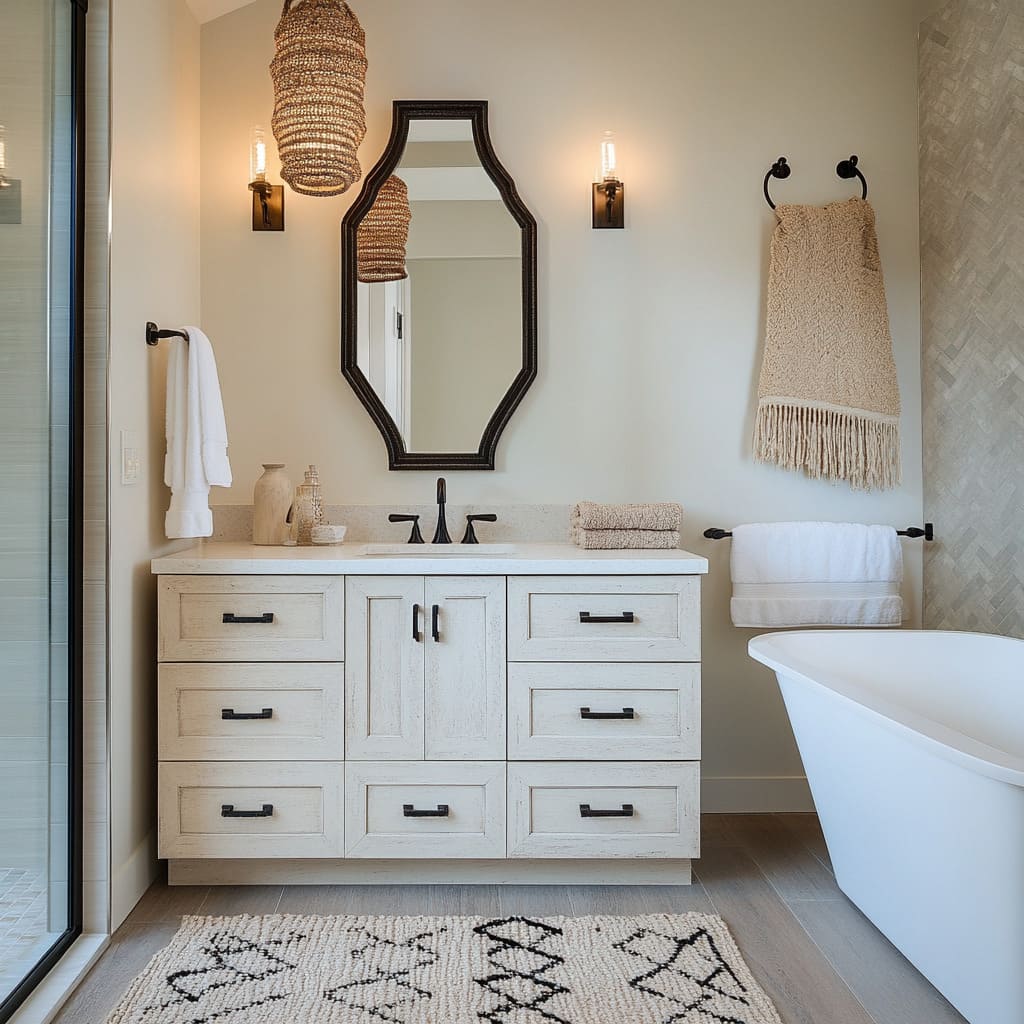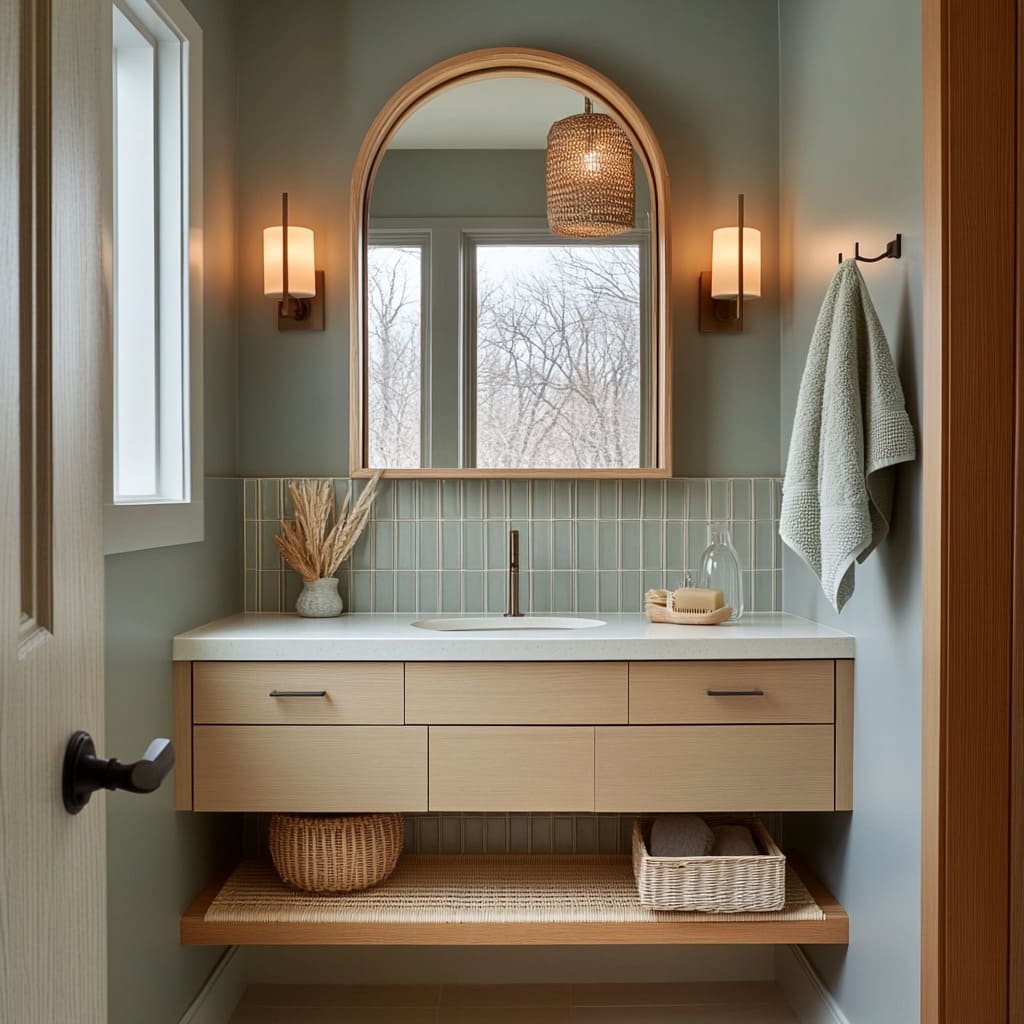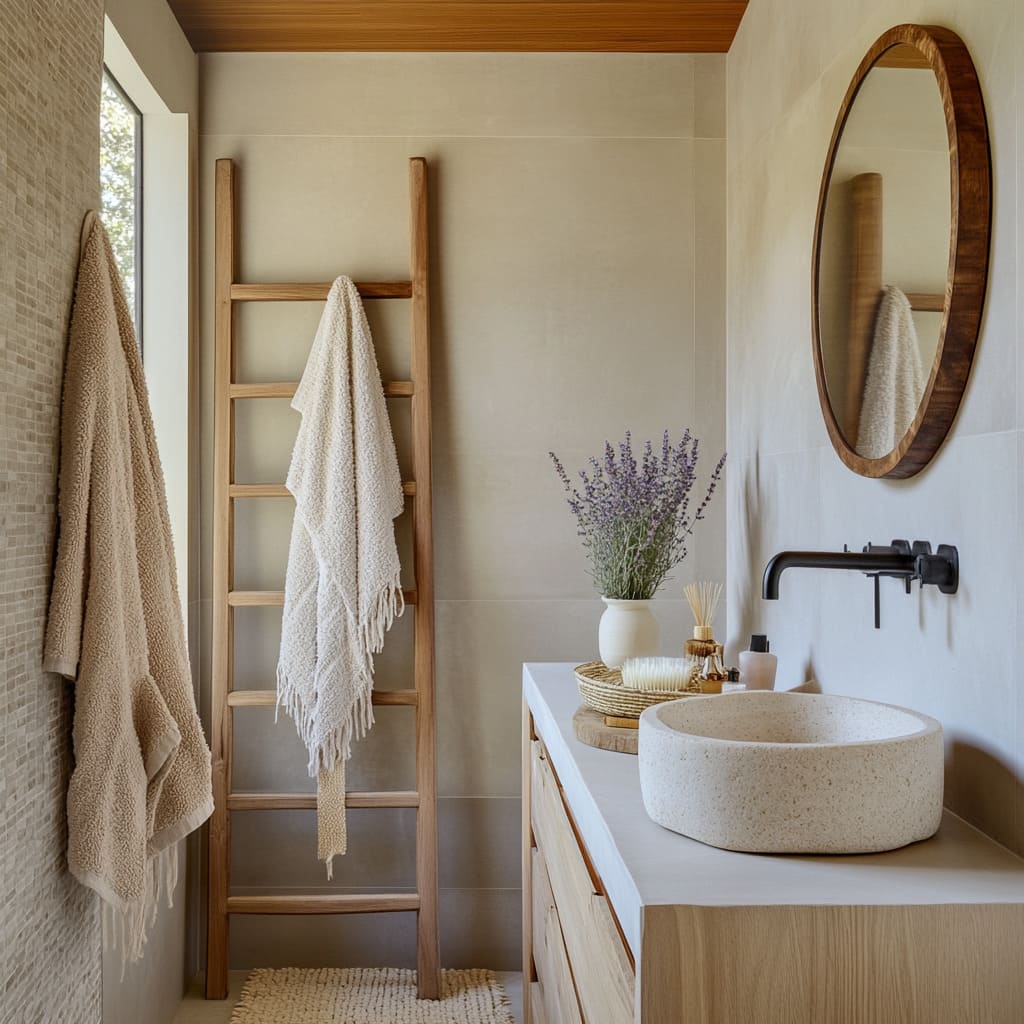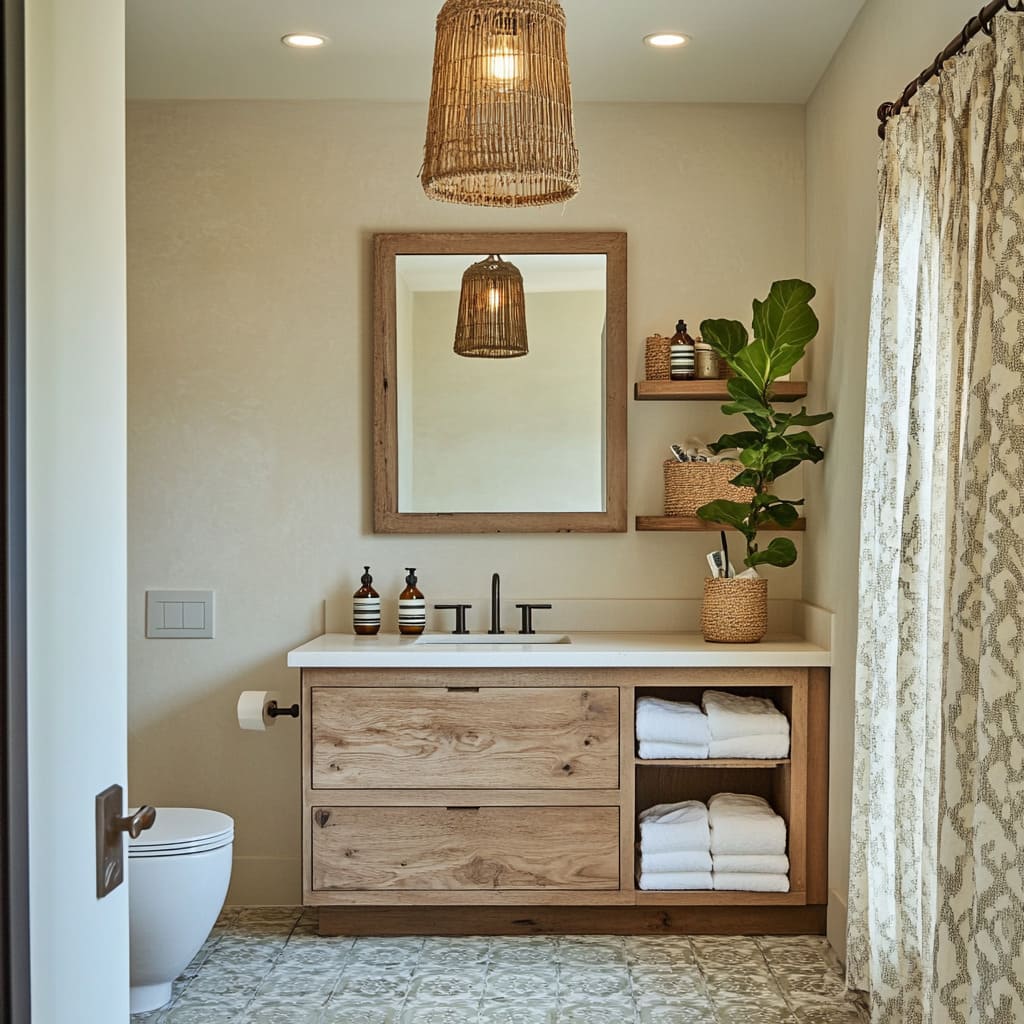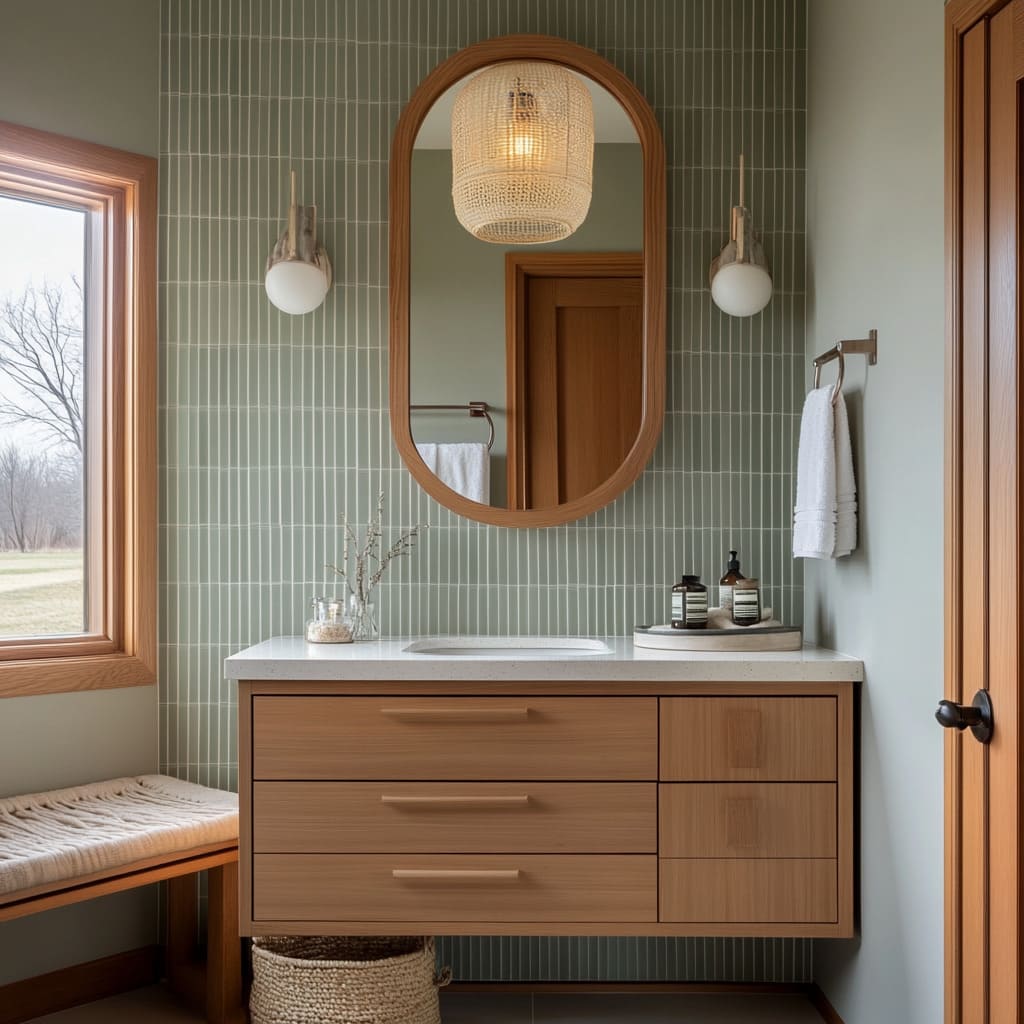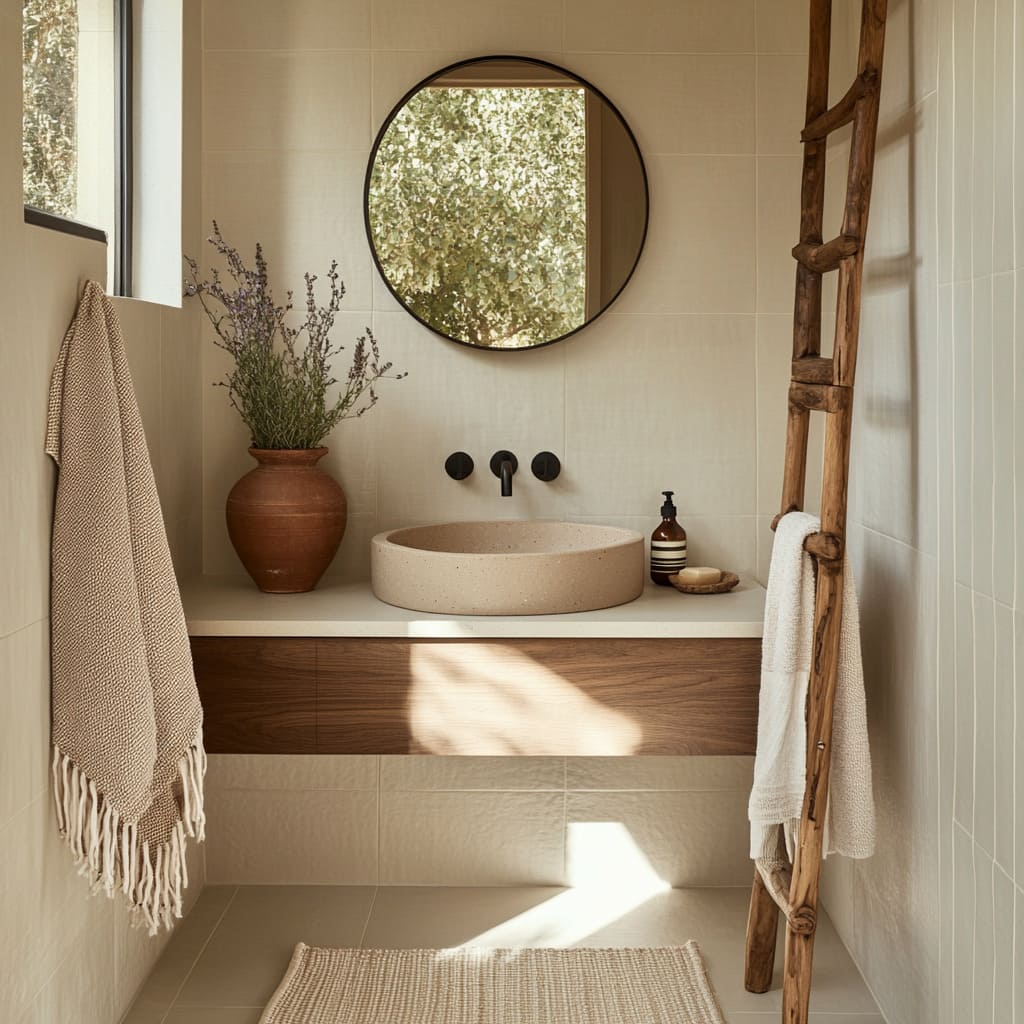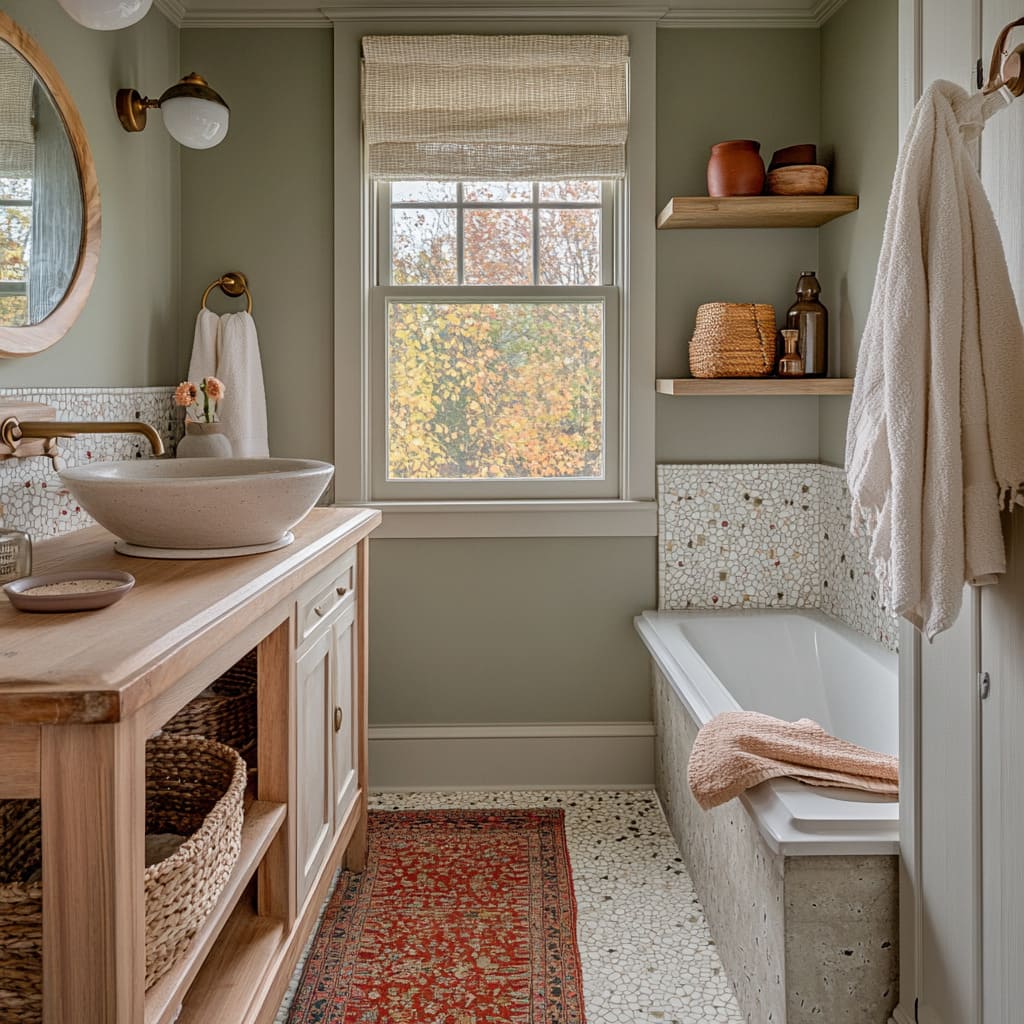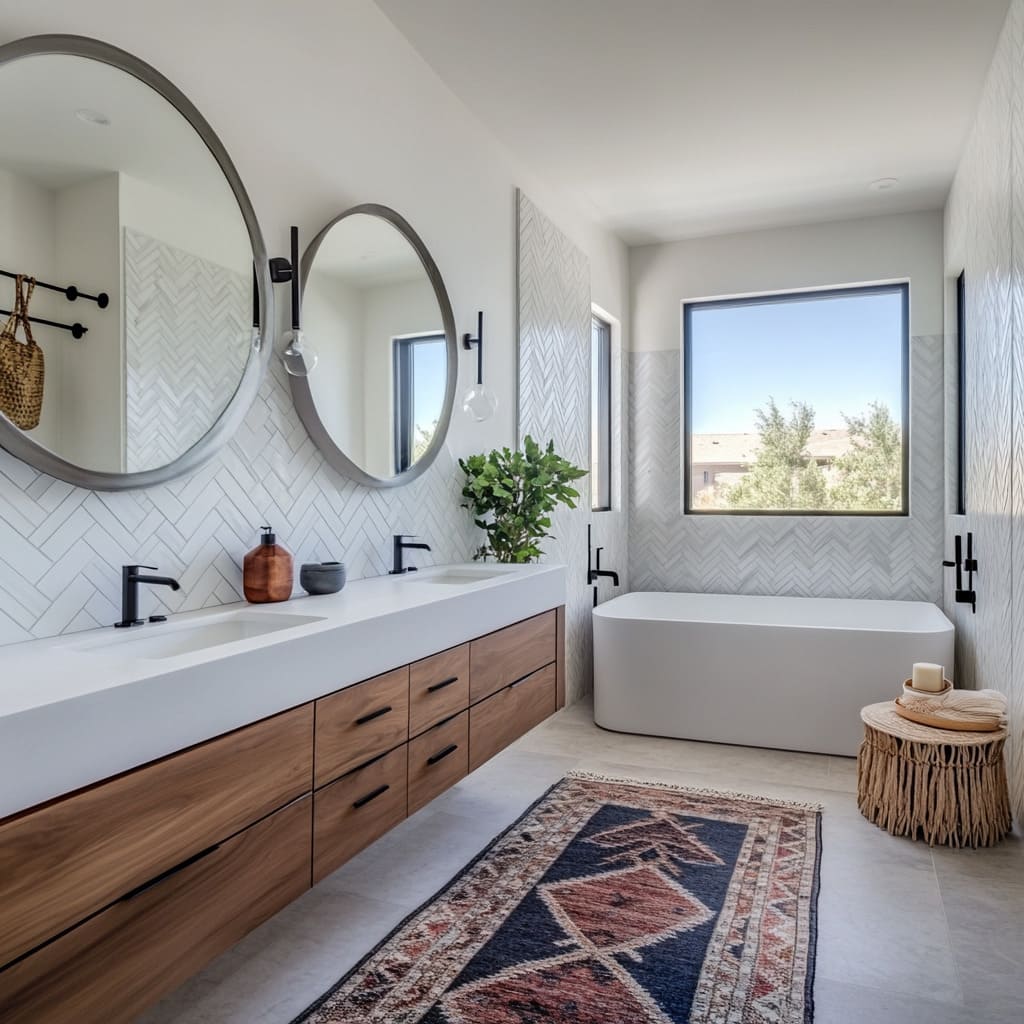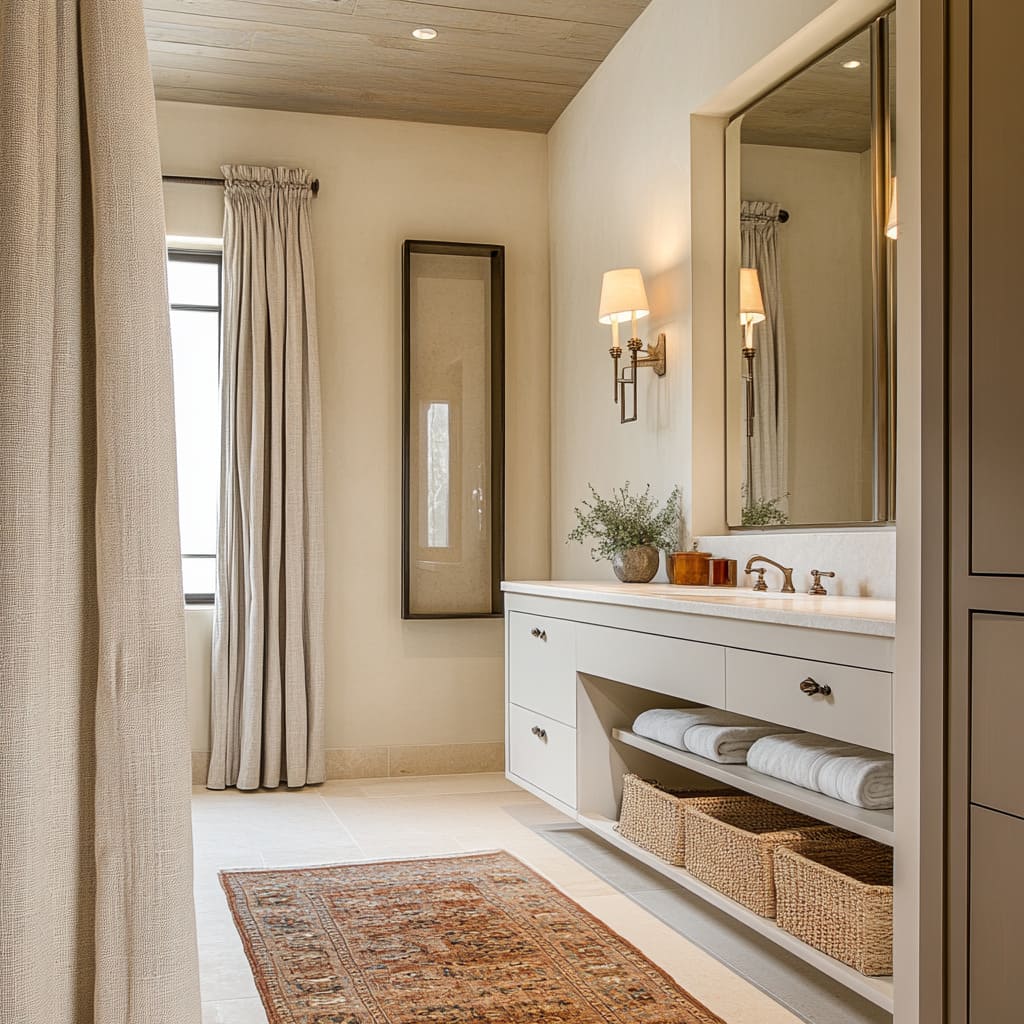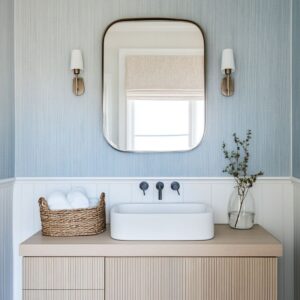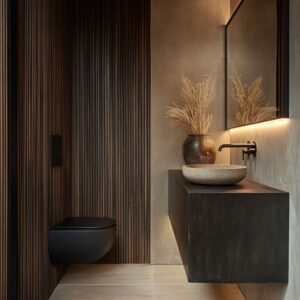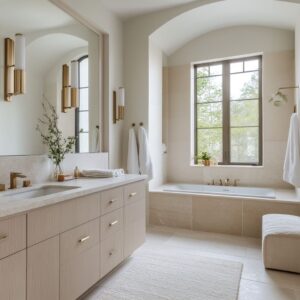There’s a quiet shift happening in bathroom design—where comfort, simplicity, and natural texture are beginning to matter more than color trends or surface shine. Boho Chic, once known for its layered fabrics and expressive styling, has evolved into something more refined and livable.
The focus now is on combining organic shapes, calming colors, and honest materials in a way that still feels personal but doesn’t overwhelm the space. Whether it’s a small powder room or a full-sized primary bath, the latest look is warm without being heavy, soft without being too casual, and relaxed without sacrificing style.
This approach is particularly appealing for those who appreciate a lived-in space that still feels intentional. Think wood vanities that look handcrafted, plastered walls that catch the light, and lighting that adds mood instead of glare.
What defines this newer take on a bohemian themed bathroom isn’t clutter or color—it’s the mix of earthy details with structure and clarity. Throughout this article, we’ll look closely at how designers are updating this style for today’s homes, the subtle tricks they use to keep it feeling current, and what truly makes these bathrooms stand out.
Understanding Modern Boho Chic
Modern Boho Chic bathrooms are all about balance—natural warmth meets clean, structured design. Instead of layering on excessive detail, today’s Boho spaces are stripped back, letting materials speak for themselves.
Think soft-textured wood with visible grain set against smooth slab countertops, or matte black fixtures popping quietly against pale, limewashed walls. This contrast between handcrafted texture and sleek forms brings a grounded, collected look that feels both relaxed and current.
Designers today aren’t filling every surface with trinkets. One standout element—a faded tribal rug, a carved stone sink, or a handwoven pendant—can do the heavy lifting.
This shift toward restraint allows each item to feel special, while still giving the room character. It’s this edit that keeps modern Boho from tipping into clutter.
You’ll still notice global references, but they’re folded into the palette more quietly. A mirror shaped like something from Marrakesh, a wall sconce wrapped in natural fiber, or a rug that pulls from Southwestern motifs—all of these details echo cultural craft without screaming for attention.
They land best in calm color ranges: sandy tones, sage greens, muted clay, chalky whites.
For anyone collecting boho chic bathroom ideas, this version of the style feels more grown-up—focused on the materials, the lines, and the way each element settles into the space without excess. It’s a quieter way to design, but it still leaves a strong impression.
What Makes These Bathrooms Fresh
What separates today’s Boho bathrooms from earlier versions is a shift in how the spaces use color, texture, and shape. Where older designs often felt layered to the point of being chaotic—with clashing prints and bright accents—modern Boho pulls back.
Instead, you’ll find subtle palettes made of whites, soft taupe, muted clay tones, pale sage, and warm greys. These tone-on-tone color schemes give room for natural textures—like hand-finished plaster or wire-brushed wood—to stand out without having to compete.
Hardware also plays a bigger role now. Faucets and drawer pulls in matte black, aged bronze, or brushed brass become visual markers in an otherwise soft space.
They’re not flashy, but they add contrast in just the right way. Set against light walls or creamy counters, that hardware becomes part of the overall mood—refined without looking overworked.
Another update comes through sculptural accents. Boho chic bathrooms today often include something with real tactile appeal: a rough-edged stone sink, a mirror with an irregular wood frame, or pendant lights woven from natural fibers that throw patterned shadows at night.
These handmade elements aren’t just decorative—they give the space a sense of depth and character.
The shapes in these bathrooms are softer, too. Rounded mirrors, arched openings, curved basins—these are all recurring details.
They help to soften the more straightforward lines of floating vanities or squared tilework, making the whole space feel more relaxed without losing its structure. This blend of fluid lines and clean edges is what gives modern Boho its fresh edge.
Design Ideas at Play
One of the most fascinating traits of updated Boho interiors is how they lean into controlled flaws—textures and forms that feel organic, a little raw, but completely intentional. You might spot a vanity top made from live-edge wood, its surface marked by uneven cuts and slight nicks that aren’t mistakes but character.
Terracotta floor tiles in these bathrooms don’t aim for exact matches; their uneven tone and irregular edges catch the light differently throughout the day, offering visual movement. A pendant light woven by hand may hang slightly off-center or dip unevenly—and that’s part of its charm.
These kinds of irregularities keep the space personal and far from anything that feels factory-made.
Another key move designers use is the idea of letting things breathe. A bohemian style bathroom doesn’t pack every inch with objects.
Blank spaces are purposeful—bare wall sections, open floor, or even a shelf with only one item. These empty spots act like a pause, giving the eye space to appreciate the materiality of what is there.
A tall glass vase with one dry branch or a rough ceramic tray sitting alone can feel powerful when there’s nothing else crowding it.
There’s also a quiet precision behind the layout. Look closely and you’ll find lines that echo one another—wood ceiling beams that run perfectly above mirror frames, open shelving that aligns with sink height, or windows placed to mirror shower tile lines.
These details aren’t loud, but they create a sense of harmony that supports the handmade feel without letting it fall into visual noise.
Lighting, too, plays a more refined role than just brightening a room. Woven sconces or loose fiber pendants don’t just light the area—they project subtle patterns onto nearby walls and floors, especially when combined with textured finishes like limewash or raw stucco.
These shadows aren’t accidental; they’re part of the texture story.
Interestingly, many of these spaces now include elements once considered outside the Boho language—think wire mesh pendants, iron towel hooks, or raw black plumbing fixtures. These tougher materials give structure and edge to all the woven, wooden, and earthen details.
That slight industrial layer tempers the softness and gives the overall design a grounded, practical feel without losing warmth. It’s this blend of easygoing craft with thoughtful structure that keeps modern Boho bathrooms feeling relevant today.
Key New Trends Reflected
Modern Boho bathrooms have taken a quieter, more refined path lately—where less really does feel like more. Warm minimalism is now a driving force.
Instead of packing a room with layers of textiles and decorations, designers are choosing fewer, better pieces. Think wide tiles in muted stone tones, faucets with a low sheen, and one or two standout accents—a timeworn rug underfoot, or a vintage clay vase that holds its own without help.
This pared-back style still feels inviting, but there’s a calm control behind the mix.
Vanities have also changed shape—quite literally. Instead of built-in cabinetry with traditional panels and hardware, the trend leans into furniture-like vanities that seem placed rather than installed.
Many of these float above the floor and have no handles at all. They look like pieces you’d find in a living room, softened by rounded edges or a natural wood finish.
Storage is often left open, with low baskets and trays that keep essentials accessible but relaxed.
Another standout idea is mixing wood tones instead of trying to match everything. Designers are no longer shy about placing a walnut drawer next to a lighter oak panel.
This kind of visual variation gives the room movement and depth without loud color shifts. Even small touches—like a dark wood shelf floating above a pale vanity—add enough contrast to keep things interesting.
Walls are getting more attention too. Basic paint is often swapped for finishes that feel older or more handmade.
Limewash gives a chalky depth, hand-troweled stucco adds soft irregularities, and murals—even subtle ones—can bring a touch of artistry. These kinds of surfaces echo global craftsmanship in a quiet, thoughtful way.
Under all this, there’s often a base of soft neutrals and gentle structure. But that doesn’t mean the soul of Boho has been stripped away.
You’ll still spot hand-thrown ceramics, woven lighting, or a textile rug that tells a story. What’s different is the mix—Boho details now appear in more curated doses.
The result is a fresh, livable version of bohemian bathroom design that feels grounded, natural, and easy to enjoy every day.
How the Designs Work Functionally and Visually
One of the reasons these spaces feel so lived-in and natural is the way texture and material are layered with intention. You might see a rough-cut stone sink sitting on top of a warm wood vanity, with a woven pendant light hanging above—each material different in finish, yet working together to build visual interest.
These combinations don’t fight for attention but build a slow rhythm that keeps the space feeling grounded.
Natural light isn’t treated as an afterthought either. In many modern layouts, larger windows or carefully positioned mirrors bring daylight right into the spotlight.
The effect is more than just brightness. It pulls out details in tile grout, shows off the movement in plastered walls, or highlights the knot pattern in a ceiling beam.
The changing light throughout the day almost reshapes the room, adding quiet variation without needing to change a thing.
Small details also carry big weight. Dried pampas, a looped macramé wall hanging, or a handwoven rug do more than decorate—they connect the elements together.
Each one helps echo the softness, the handmade feel, the collected-over-time character that defines a true bohemian chic bathroom.
Storage is another spot where these spaces stand out. Rather than relying on built-ins with doors and drawers, you’ll find open wood shelving with rolled towels, rope-handled baskets resting on the floor, or recessed wall niches shaped into the plaster.
These options give the room flexibility while keeping things visually light.
What ties it all together is the balance—rough textures like raw stone or fiber art are softened by smooth finishes like polished counters or streamlined sinks. One item might look rustic, another crisp and minimal, but placed together they play off each other.
That contrast is what gives these spaces their quiet charm. It’s less about matching and more about mixing textures in a way that feels casual, honest, and naturally functional.
Concluding Thoughts
The most striking thing about modern Boho Chic bathrooms is how quietly they make their point. Instead of shouting with color or decoration, they speak through texture, proportion, and thoughtful restraint.
A plain plaster wall can become the perfect backdrop for a single stool carved from raw timber. A dried bouquet in an oversized vase suddenly becomes the visual centerpiece because it has the space to breathe.
Nothing feels rushed or overly styled—it’s all about letting natural materials and handmade touches hold the spotlight in their own way.
These bathrooms show that you don’t need layers of print or overly ornate finishes to create warmth. In fact, what makes them work so well today is the pullback: fewer colors, fewer materials, more clarity.
But within that simplicity, the charm of Boho still thrives—whether it’s through a worn rug, a wavy-edge sink, or a vintage brass fixture that shows its age.
That’s the quiet power behind the most current bohemian bathroom design ideas. It’s about editing, not stripping down.
Letting one sculptural light fixture take center stage, or choosing a wood grain with enough movement that it doesn’t need embellishment. This shift toward refinement keeps the free-spirited attitude intact but adapts it for homes that also want order, clarity, and comfort.
It’s Boho with polish—never stiff, never overly curated, but always thoughtful.

